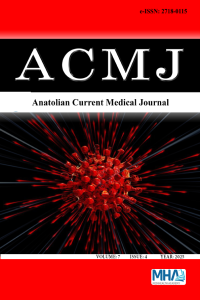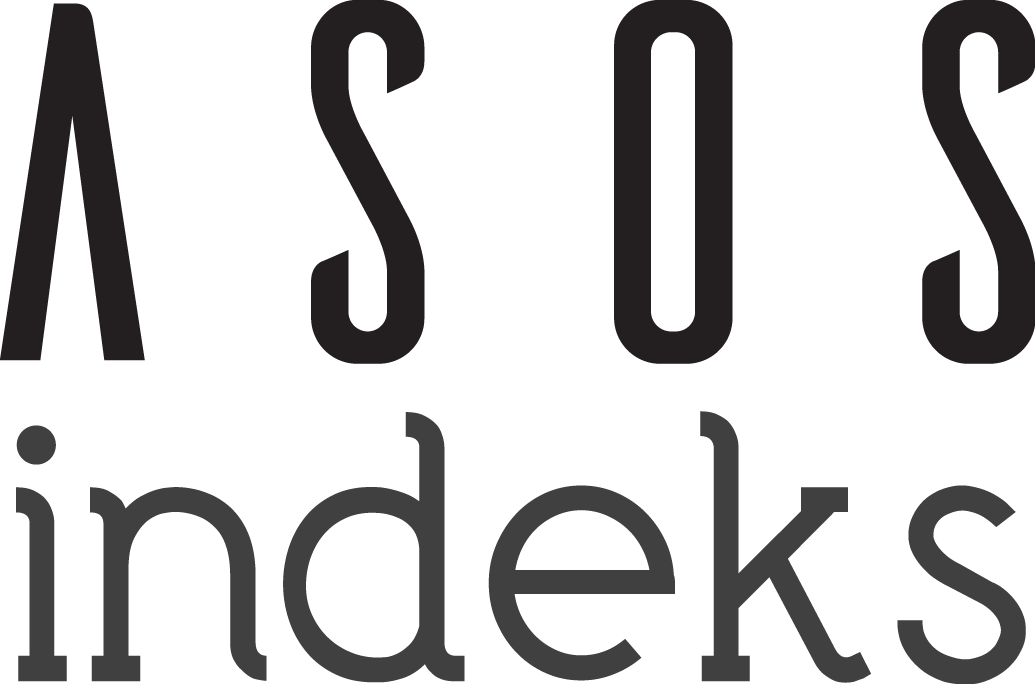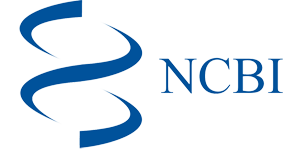Histopathological effects of intranasal mometasone furoate on adenoidal tissue in children undergoing adenoidectomy
Abstract
Aims: Adenoidal hypertrophy is a major contributor to upper airway obstruction and sleep-disordered breathing in children. Although intranasal corticosteroids (INCS) are clinically effective in alleviating symptoms, their histopathological effects on adenoidal tissue remain underexplored. This study aimed to evaluate the histopathological changes in adenoidal tissue following preoperative intranasal mometasone furoate therapy in pediatric patients undergoing adenoidectomy.
Methods: This retrospective cross-sectional study included 96 children aged 2–18 years who underwent adenoidectomy between 2022 and 2024. Patients were divided into two groups: group 1 (no steroid therapy) and group 2 (received intranasal mometasone furoate 100 mcg/day for six weeks preoperatively). All patients used saline nasal irrigation during the same period. Adenoidal tissue samples were assessed histopathologically using semi-quantitative scoring (0–3) for follicular hyperplasia, chronic inflammation, acute inflammation, and goblet cell hyperplasia. Binary parameters including fibrosis, atrophy, ulceration, and hemorrhage were also evaluated.
Results: Group 2 exhibited significantly lower levels of follicular hyperplasia (median score 1.0 vs. 3.0, p<0.001), acute inflammation (0.0 vs. 1.0, p<0.001), and goblet cell hyperplasia (p=0.048) compared to group 1. No significant differences were observed in chronic inflammation, fibrosis, atrophy, ulceration, or hemorrhage.
Conclusion: Preoperative intranasal mometasone furoate significantly reduces certain inflammatory and hyperplastic histopathological features of adenoidal tissue in children. These findings support its use as a non-surgical treatment option for selected cases of adenoidal hypertrophy and warrant further prospective research.
Keywords
Adenoid hypertrophy mometasone furoate intranasal corticosteroids histopathology adenoidectomy
Ethical Statement
The study was initiated with the approval of the Hitit University Medical Faculty Clinical Researches Ethics Committee (Date07.05.2024:, Decision No:2025-80 ).
Supporting Institution
none
References
- Kheirandish-Gozal L, Serpero LD, Dayyat E, et al. Corticosteroids suppress in vitro tonsillar proliferation in children with obstructive sleep apnoea. Eur Respir J. 2009;33(5):1077-1084. doi:10.1183/09031936. 00130608
- Babakurban ST. Adenoidectomy: current approaches and review of the literature. Kulak Burun Bogaz Ihtis Derg. 2016;26(3):181-190. doi:10. 5606/kbbihtisas.2016.32815
- Ahmed MR, Abou-Halawa AS, Ibrahim IH, Zittoon RF, Makary EFY. Effect of topical mometasone furoate on adenoidal lymphoid tissue: a light microscopic study. J Laryngol Otol. 2019;133(2):106-109. doi:10. 1017/S0022215118002268
- Akcan FA, Bayram Akcan H, Dundar Y, Uluat A, Karakuş E. The Histopathological findings of adenoid tissue after topical mometasone furoate implementation. Konuralp Tıp Dergisi. 2018;10(2):203-207. doi: 10.18521/ktd.365710
- Sadeghi-Shabestari M, Naderpoor M, Farzipour S, Dastranji A. The role of intranasal corticosteroid therapy in pediatric adenoidal hypertrophy: a randomized clinical trial study. Immunol Genet J. 2021;4(3):161-165 doi:10.18502/igj.v4i3.12116
- Yilmaz HB, Celebi S, Sahin-Yilmaz A, Oysu C. The role of mometasone furoate nasal spray in the treatment of adenoidal hypertrophy in the adolescents: a prospective, randomized, cross-over study. Eur Arch Otorhinolaryngol. 2013;270(10):2657-2661. doi:10.1007/s00405-013-2364-9
- Arslan E, Tulaci KG, Canakci H, Arslan S, Yazici H. Evaluation of the intranasal steroid treatment outcomes in adenoid tissue hypertrophy with or without allergic rhinitis. Am J Otolaryngol. 2021;42(4):102983. doi:10.1016/j.amjoto.2021.102983
- Bilgili AM, Durmaz HÖ, Dilber M. Eustachian tube dysfunction in children with adenoid hypertrophy: the effect of intranasal azelastine-fluticasone spray treatment on middle ear ventilation and adenoid tissue. Ear Nose Throat J. 2023;102(3):198-203. doi:10.1177/01455613221140281
- Zwierz A, Masna K, Domagalski K, Burduk P. The long-term effects of 12-week intranasal steroid therapy on adenoid size, its mucus coverage and otitis media with effusion: a cohort study in preschool children. JCM. 2022;11(3):507. doi:10.3390/jcm11030507
- Ras AE, Hamed MH, Abdelalim AA. Montelukast combined with intranasal mometasone furoate versus intranasal mometasone furoate; a comparative study in treatment of adenoid hypertrophy. Am J Otolaryngol. 2020;41(6):102723. doi:10.1016/j.amjoto.2020.102723
- Ezzat WF, Elczz TAA, Marouf AM, Ahmed EM. Nasal steroids use in the prevention of symptomatizing adenoid regrowth after adenoidectomy. QJM. 2021;114(Supplement_1):hcab094-008.
Histopathological effects of intranasal mometasone furoate on adenoidal tissue in children undergoing adenoidectomy
Abstract
Aims: Adenoidal hypertrophy is a major contributor to upper airway obstruction and sleep-disordered breathing in children. Although intranasal corticosteroids (INCS) are clinically effective in alleviating symptoms, their histopathological effects on adenoidal tissue remain underexplored. This study aimed to evaluate the histopathological changes in adenoidal tissue following preoperative intranasal mometasone furoate therapy in pediatric patients undergoing adenoidectomy.
Methods: This retrospective cross-sectional study included 96 children aged 2–18 years who underwent adenoidectomy between 2022 and 2024. Patients were divided into two groups: group 1 (no steroid therapy) and group 2 (received intranasal mometasone furoate 100 mcg/day for six weeks preoperatively). All patients used saline nasal irrigation during the same period. Adenoidal tissue samples were assessed histopathologically using semi-quantitative scoring (0–3) for follicular hyperplasia, chronic inflammation, acute inflammation, and goblet cell hyperplasia. Binary parameters including fibrosis, atrophy, ulceration,
and hemorrhage were also evaluated.
Results: Group 2 exhibited significantly lower levels of follicular hyperplasia (median score 1.0 vs. 3.0, p<0.001), acute inflammation (0.0 vs. 1.0, p<0.001), and goblet cell hyperplasia (p=0.048) compared to group 1. No significant differences were observed in chronic inflammation, fibrosis, atrophy, ulceration, or hemorrhage.
Conclusion: Preoperative intranasal mometasone furoate significantly reduces certain inflammatory and hyperplastic histopathological features of adenoidal tissue in children. These findings support its use as a non-surgical treatment option for selected cases of adenoidal hypertrophy and warrant further prospective research.
Keywords
Adenoid hypertrophy mometasone furoate intranasal corticosteroids histopathology adenoidectomy
References
- Kheirandish-Gozal L, Serpero LD, Dayyat E, et al. Corticosteroids suppress in vitro tonsillar proliferation in children with obstructive sleep apnoea. Eur Respir J. 2009;33(5):1077-1084. doi:10.1183/09031936. 00130608
- Babakurban ST. Adenoidectomy: current approaches and review of the literature. Kulak Burun Bogaz Ihtis Derg. 2016;26(3):181-190. doi:10. 5606/kbbihtisas.2016.32815
- Ahmed MR, Abou-Halawa AS, Ibrahim IH, Zittoon RF, Makary EFY. Effect of topical mometasone furoate on adenoidal lymphoid tissue: a light microscopic study. J Laryngol Otol. 2019;133(2):106-109. doi:10. 1017/S0022215118002268
- Akcan FA, Bayram Akcan H, Dundar Y, Uluat A, Karakuş E. The Histopathological findings of adenoid tissue after topical mometasone furoate implementation. Konuralp Tıp Dergisi. 2018;10(2):203-207. doi: 10.18521/ktd.365710
- Sadeghi-Shabestari M, Naderpoor M, Farzipour S, Dastranji A. The role of intranasal corticosteroid therapy in pediatric adenoidal hypertrophy: a randomized clinical trial study. Immunol Genet J. 2021;4(3):161-165 doi:10.18502/igj.v4i3.12116
- Yilmaz HB, Celebi S, Sahin-Yilmaz A, Oysu C. The role of mometasone furoate nasal spray in the treatment of adenoidal hypertrophy in the adolescents: a prospective, randomized, cross-over study. Eur Arch Otorhinolaryngol. 2013;270(10):2657-2661. doi:10.1007/s00405-013-2364-9
- Arslan E, Tulaci KG, Canakci H, Arslan S, Yazici H. Evaluation of the intranasal steroid treatment outcomes in adenoid tissue hypertrophy with or without allergic rhinitis. Am J Otolaryngol. 2021;42(4):102983. doi:10.1016/j.amjoto.2021.102983
- Bilgili AM, Durmaz HÖ, Dilber M. Eustachian tube dysfunction in children with adenoid hypertrophy: the effect of intranasal azelastine-fluticasone spray treatment on middle ear ventilation and adenoid tissue. Ear Nose Throat J. 2023;102(3):198-203. doi:10.1177/01455613221140281
- Zwierz A, Masna K, Domagalski K, Burduk P. The long-term effects of 12-week intranasal steroid therapy on adenoid size, its mucus coverage and otitis media with effusion: a cohort study in preschool children. JCM. 2022;11(3):507. doi:10.3390/jcm11030507
- Ras AE, Hamed MH, Abdelalim AA. Montelukast combined with intranasal mometasone furoate versus intranasal mometasone furoate; a comparative study in treatment of adenoid hypertrophy. Am J Otolaryngol. 2020;41(6):102723. doi:10.1016/j.amjoto.2020.102723
- Ezzat WF, Elczz TAA, Marouf AM, Ahmed EM. Nasal steroids use in the prevention of symptomatizing adenoid regrowth after adenoidectomy. QJM. 2021;114(Supplement_1):hcab094-008.
Details
| Primary Language | English |
|---|---|
| Subjects | Otorhinolaryngology |
| Journal Section | Research Articles |
| Authors | |
| Publication Date | July 28, 2025 |
| Submission Date | June 3, 2025 |
| Acceptance Date | July 17, 2025 |
| Published in Issue | Year 2025 Volume: 7 Issue: 4 |
TR DİZİN ULAKBİM and International Indexes (1b)
Interuniversity Board (UAK) Equivalency: Article published in Ulakbim TR Index journal [10 POINTS], and Article published in other (excuding 1a, b, c) international indexed journal (1d) [5 POINTS]
Note: Our journal is not WOS indexed and therefore is not classified as Q.
You can download Council of Higher Education (CoHG) [Yüksek Öğretim Kurumu (YÖK)] Criteria) decisions about predatory/questionable journals and the author's clarification text and journal charge policy from your browser. https://dergipark.org.tr/tr/journal/3449/file/4924/show
Journal Indexes and Platforms:
TR Dizin ULAKBİM, Google Scholar, Crossref, Worldcat (OCLC), DRJI, EuroPub, OpenAIRE, Turkiye Citation Index, Turk Medline, ROAD, ICI World of Journal's, Index Copernicus, ASOS Index, General Impact Factor, Scilit.The indexes of the journal's are;
The platforms of the journal's are;
|
The indexes/platforms of the journal are;
TR Dizin Ulakbim, Crossref (DOI), Google Scholar, EuroPub, Directory of Research Journal İndexing (DRJI), Worldcat (OCLC), OpenAIRE, ASOS Index, ROAD, Turkiye Citation Index, ICI World of Journal's, Index Copernicus, Turk Medline, General Impact Factor, Scilit
Journal articles are evaluated as "Double-Blind Peer Review"
All articles published in this journal are licensed under a Creative Commons Attribution 4.0 International License (CC BY 4.0)














